Chevy Volt, The Good, The Bad and what to expect with an Electric Car
Ever since I can remember I loved being able to help the earth through recycling, reusing and reducing in every way possible. When ringing in the new year in 2010, my resolution was to stop using plastic water bottles and carry a reusable one (this is the one resolution I have actually kept!). I always bring my own reusable bags to the store. I also shared tips on ways to go green at work and these tips even got featured on television!
Recently, I decided that I wanted to go green with driving, so I started doing research on different ways to do this. I signed up for various car share and ride share programs, I educated myself a bit more on public transportation options and have researched different cars that are more fuel efficient. During my research on fuel efficient cars, of course I came across the Chevy Volt.
I learned about the Chevy Volt a few months ago through Klout Perks when they were offering 3 day test drives to influencers. While Klout Perks have won me over with amazing trips and other cool stuff in the past, based on my location I didn’t qualify for the 3 day test drive. I was bummed because I really am in the market to purchase a fuel efficient car. Fortunately I was able to get connected with Chevy’s PR team. In Southern California, they are running an informal program called “Cars to People”. and through this program I qualified for a 7 day test drive. Electric cars are a foreign concept to many. Chevy knew that the best way for people to fully understand how the Volt works and to find out how it can fit into their lifestyle is to actually let people live with it for a few days and that’s exactly what I did.
First, here’s a tour of the car!
THE GOOD- Here’s what I love about the Chevy Volt:
- I feel so eco friendly when driving the Volt. Knowing that I’m reducing carbon footprint by not emitting any gas fumes into the earth while driving is a great feeling.
- The Volt is very spacious. I need a lot of trunk space. At any given time I’m carrying around 3 yoga mats, laptop bags, gym bags, groceries and more. The Volt can definitely handle all the stuff I carry around.
- No more filling up at the gas station. At least not very often. I personally dislike the errand of getting gas. I like to go as long as possible without having to fill up simply because I feel it’s inconvenient to interrupt my trip with a stop at the gas station. The Volt is technically classified as a plug-in hybrid so it does default to gas mode when the charge runs out which is a relief knowing that you won’t just stop in the middle of the freeway. In my experience, the Volt gets about 35-40mpg in the gas mode.
- Save on insurance. Yep your insurance actually goes down! I experienced this when I drove a hybrid and this is also the case for electric cars.
- Save on high gas prices. Less trips to the gas station means spending less on gas. At first I was curious if I was actually saving money since I expected my electricity bill to go up with having to charge the car. Since I didn’t have the car that long, I was not able to track this but below is a conversation I had on YouTube with an actual Chevy Volt owner. He explains to me how much it costs to charge vs. pay for gas. He also discusses the tax benefits and how much money he is saving overall by driving the Volt. It sounds pretty awesome to me!
- Reserved parking. We all know how difficult it is to find parking sometimes. This is especially true if you’re driving downtown at night. With my Charge Point pass, I had a designated spot so I didn’t have to drive around looking for parking or pay up to $20 for a spot. I got to charge my car while I was out.
THE BAD- Here are some things about the Chevy Volt that I feel can be improved.
- Lack of charging stations. This isn’t actually anything bad about the car itself, but in general San Diego has not really embraced Electric Cars. Therefore, charging stations are few and far between. In most areas, finding a charging station is not very convenient. There are 2 main companies that offer charging stations. Charge Point, which is what I was using and Blink. Charge Point only had 3 stations in all of San Diego. I was lucky to find one when I went downtown but there were none available anywhere else I went that week.
- Charge time. I was told that it takes 8 hours to fully charge the car if you’re doing it in a garage. It takes 4 hours to fully charge the car if you’re doing it at a charging station. The charge time is just too long. I had the car plugged into the garage for over 8 hours and it did not even charge completely after all that time.
- The distance you get on a full charge is only 40 miles. I really would like to see the car go further after being plugged in for 8+ hours. When I charged my car for over 8 hours, I only got 37 miles. I often drive more than 40 miles when I go out so the majority of time, my charge ran out and I was running on gas mode.
- You need a garage. Not everyone has a house with a garage. If you don’t have one, you’ll need to rely on charging stations which are few and far between. I have a designated parking spot, but no garage of my own. Luckily my complex manager let me borrow a garage for the week so I was able to charge my car. If I were to buy a Volt, it would mean paying extra for my own garage.
- The console is not very intuitive. After playing with it for a while, I was able to figure everything out and it became easy to operate. But initially it’s a bit confusing since there are so many different buttons.
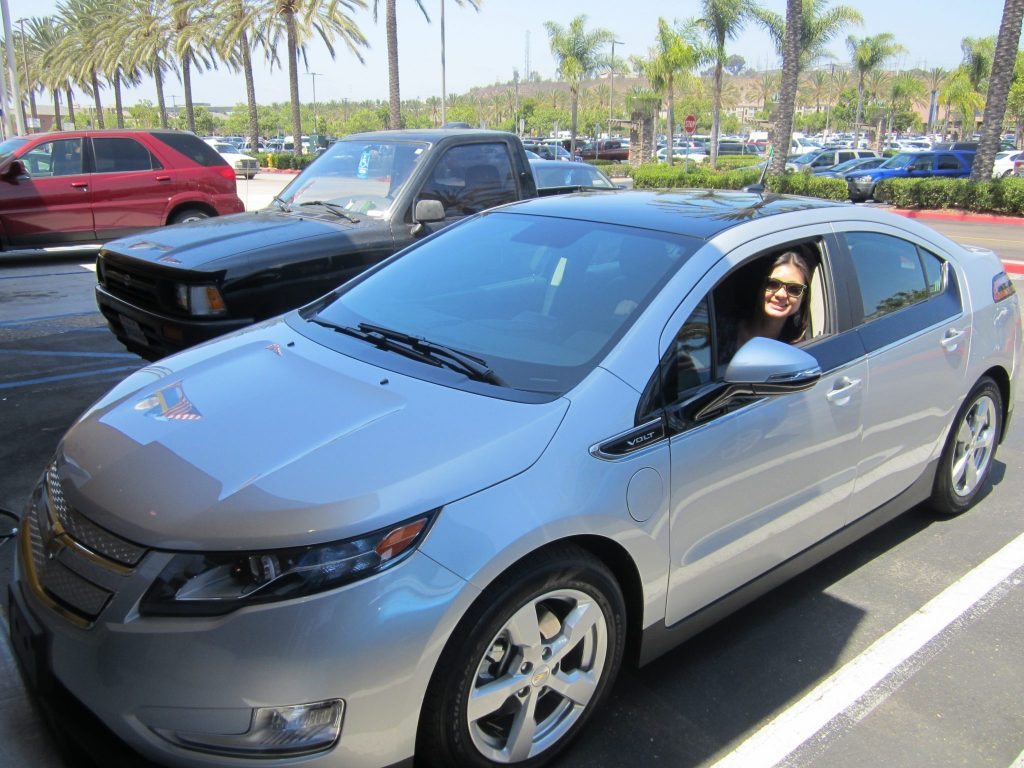
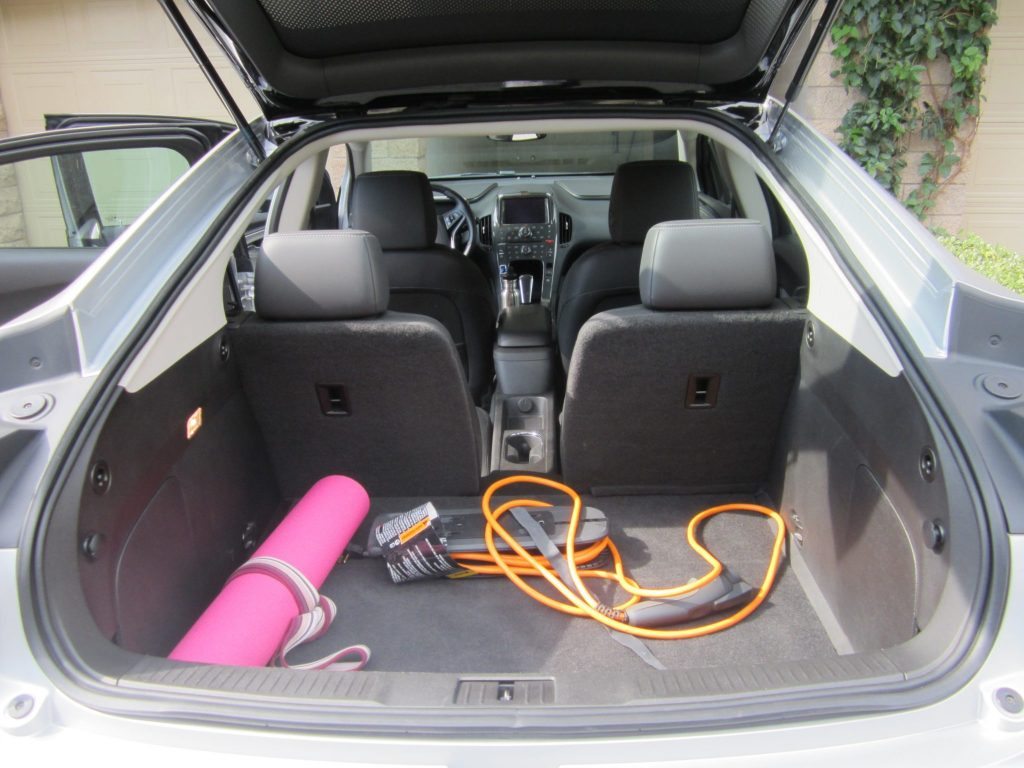
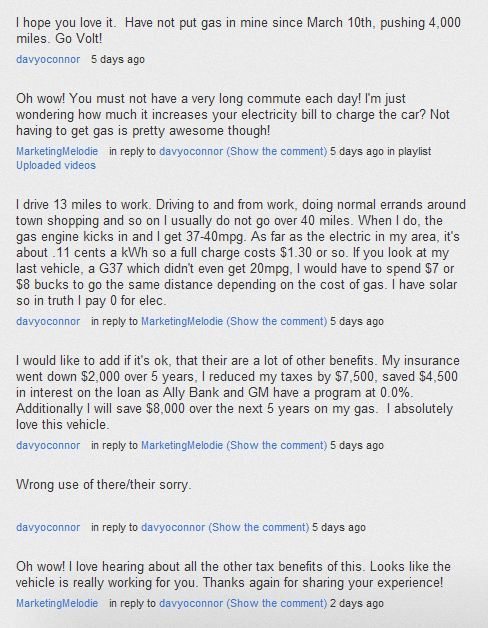
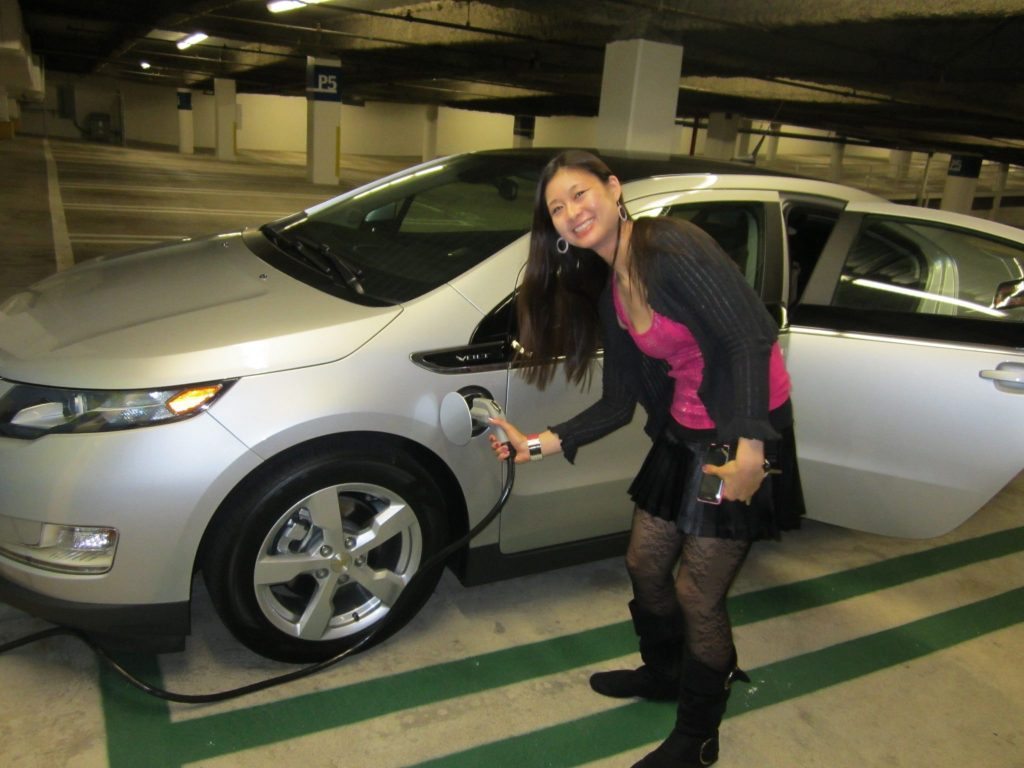
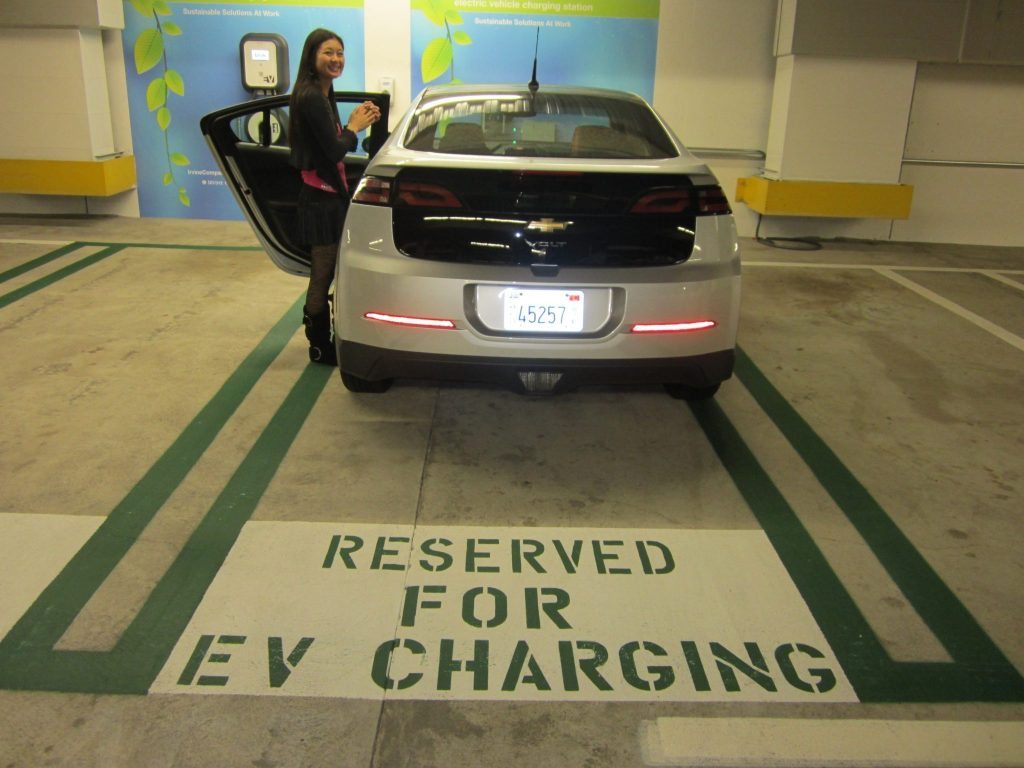


Great job Melodie!
Wish you would have had the car longer! Your electricity bill is a critical missing piece of info. Also, that looks like a 220 Volt plug, not a standard line. I’m thinking that bill would have to be huge. Who pays for the electricity when you charge at a charging station?
Thanks for the effort and review! 🙂
Rick
Hi Rick, thanks for reading. Were you able to read the conversation I copied with an actual Chevy Volt owner in this post? He discusses the cost of his electricity going up vs getting gas. A full charge which is 40 miles costs him about $1.30 compared to $4/gal for gas. Also at the charging station, the car owner pays for the electricity. You have to buy a charge pass or you pay per hour. I mentioned that I didn’t have to pay only because Chevy gave me a charge pass that they already paid for with the car.
Hey Melodie!
Yes, I read it, but have a hard time believing it. He charges his car for eight hours at home with a 220 Line and it only costs $1.30? I find that hard to believe. And then 37- 40 Mpg in stop and go driving? I find that hard to believe too. Do you know what the charge station charges per hour? And how many stalls are there at a station? Thanks! 🙂
Rick,
This is Rob Peterson from Chevrolet Communications. Hopefully I can clarify the energy use/cost for charging a Volt.
The charge cord that comes with the car is 110v capable. However, the connector for the 110v cord and a 220v charging station are the same. This may explain why it appears that she’s charging at 220v.
To fully charge the Volt’s battery – which requires roughly 10 kWh of energy – takes 10-12 hours using a household 110v outlet, or 4 hours from a 220v charging station. On average, the cost of electricity in the United States is $.12 kwh , which works out to about $1.50 to fully charge the Volt. Fully charged the EPA estimates that a 2012 Volt can achieve approximately 35 miles (38 miles for the 2013 model), fairly consistent with Melodie’s results.
Melodie – glad you enjoyed the Volt!
Thanks
Rob
Hi Rob,
Thank you so much for clarifying the information about the Volt’s battery. It does seem like to fully charge the battery is much more cost efficient than buying gas. Thanks again for an opportunity to drive the Volt! I definitely would like to get an electric car in the future but I know I’ll need a garage in order to make it work for me.
Best,
Melodie